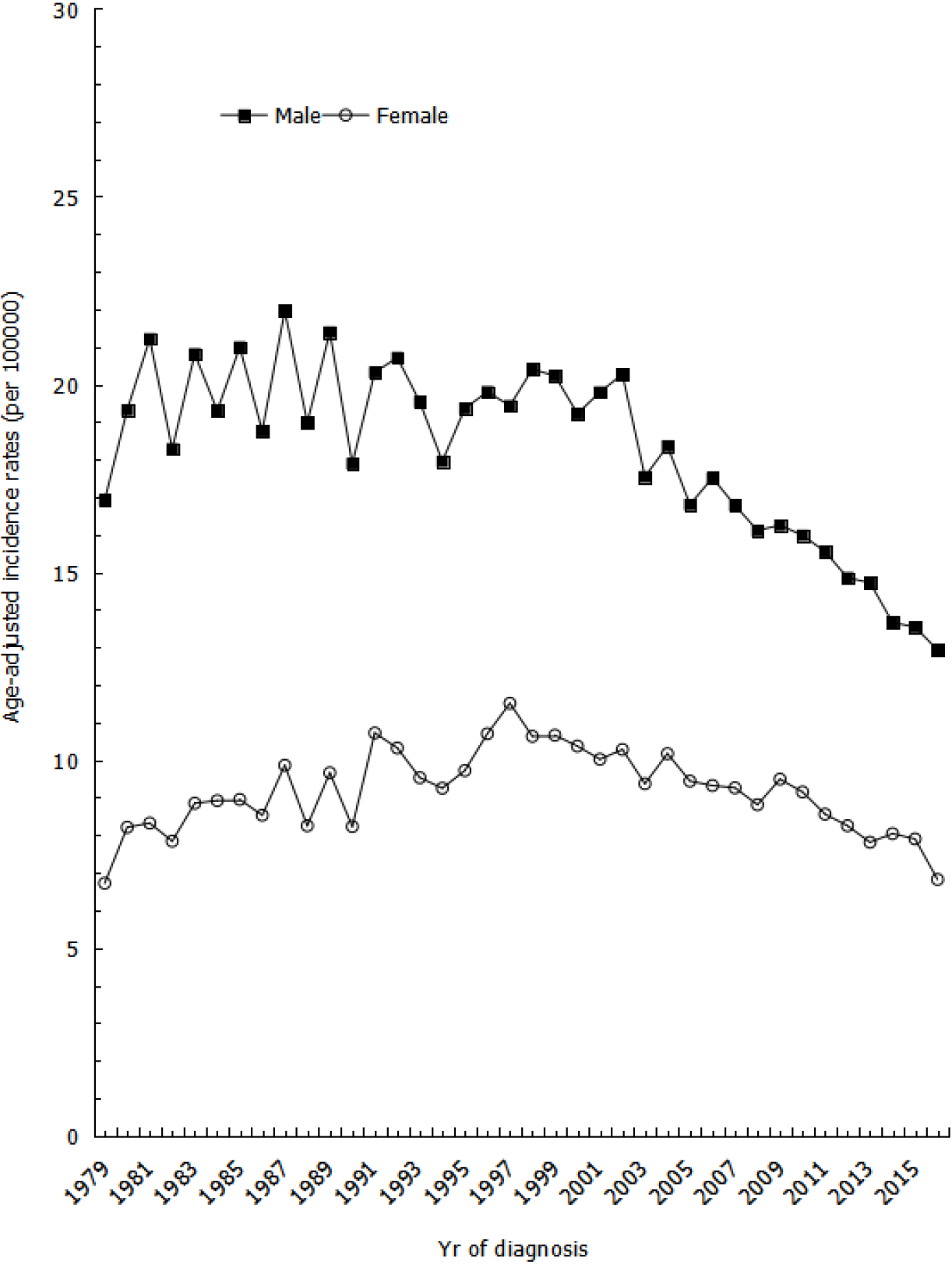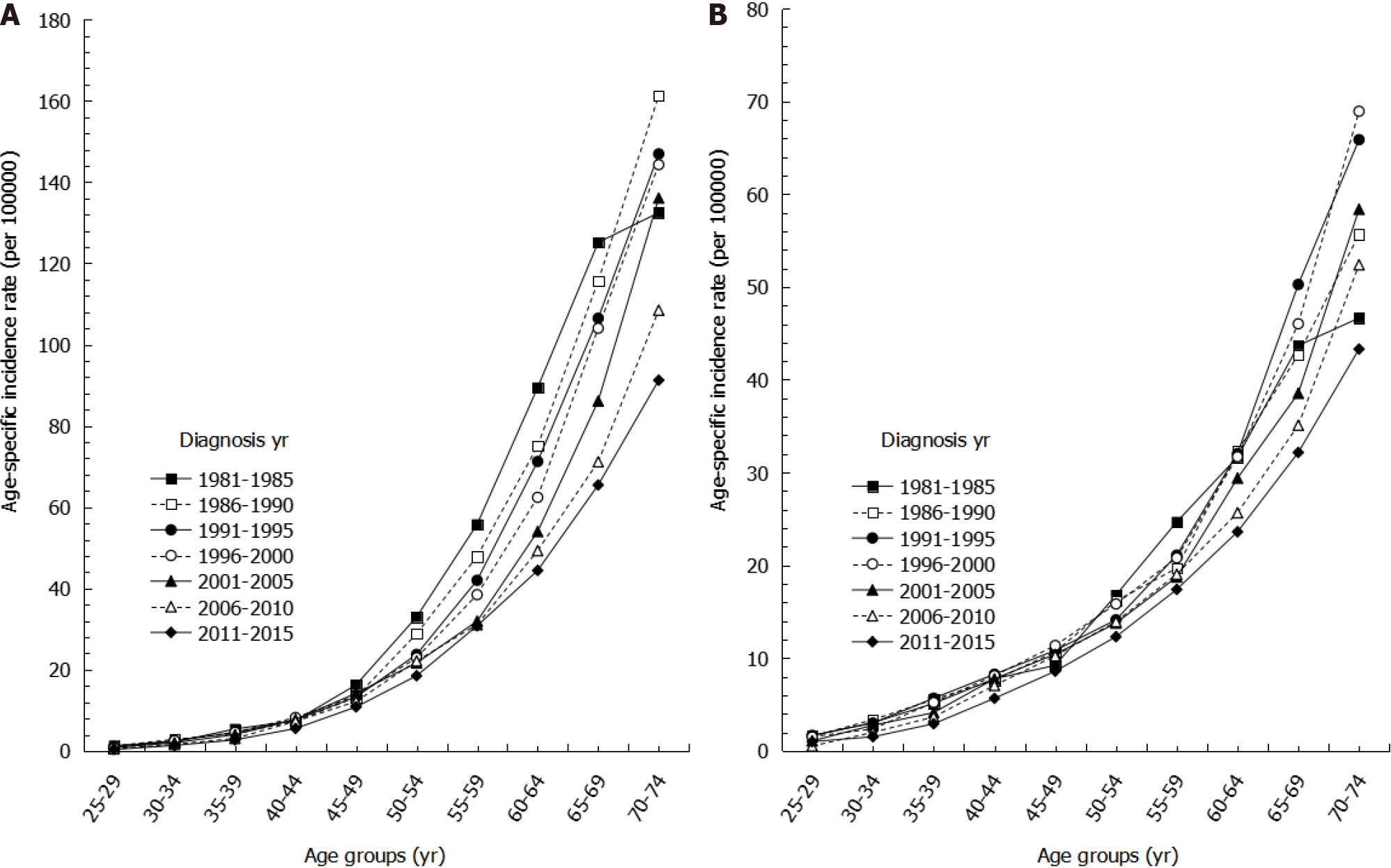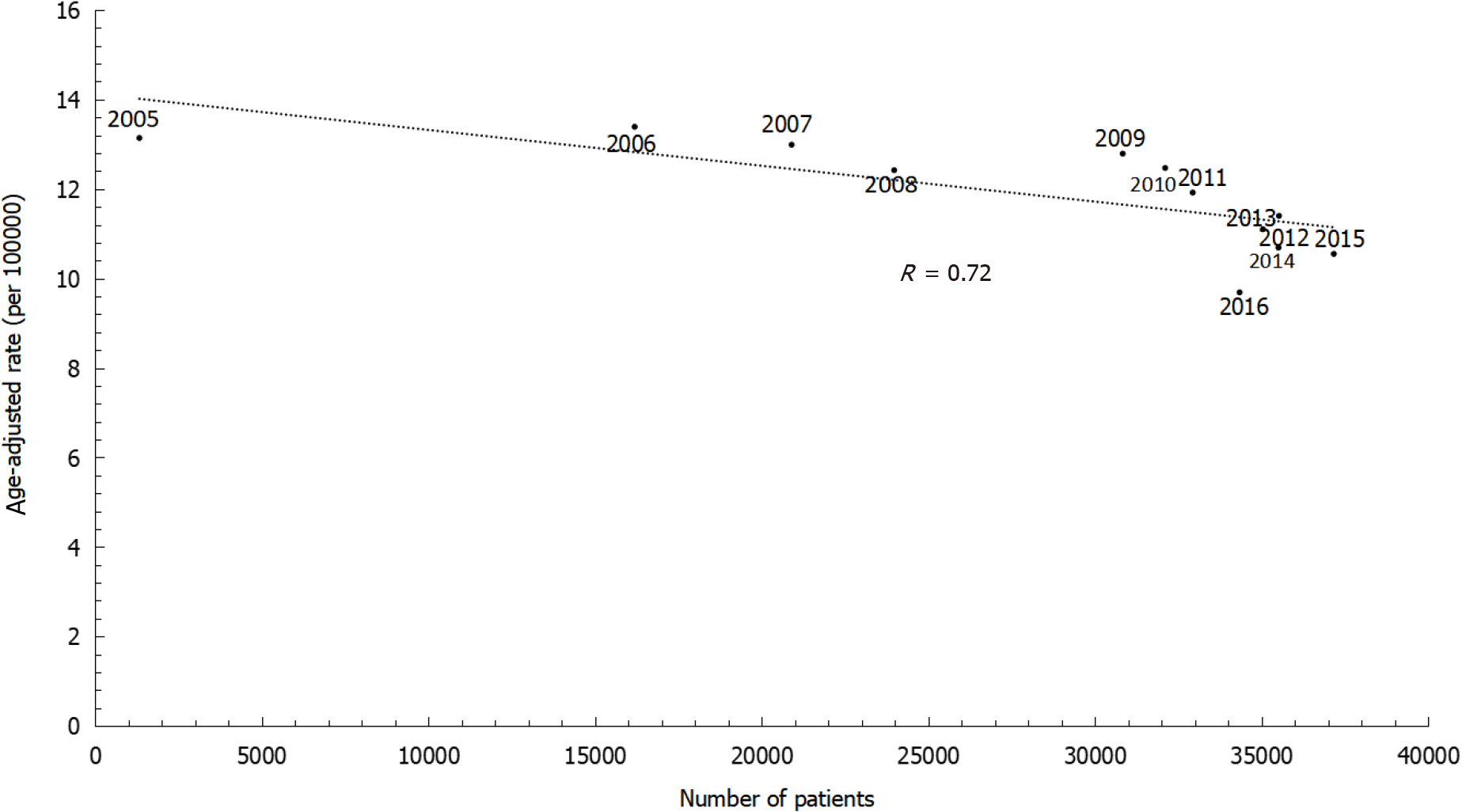Copyright
©The Author(s) 2021.
World J Gastroenterol. Sep 14, 2021; 27(34): 5764-5774
Published online Sep 14, 2021. doi: 10.3748/wjg.v27.i34.5764
Published online Sep 14, 2021. doi: 10.3748/wjg.v27.i34.5764
Figure 1 Secular trends in age-adjusted incidence rates of gastric cancer in Taiwan.
1979-2016, showing steadily decreasing rates in males from 2002 to 2016, with an Average Annual Percent Change (AAPC) of -2.58%, and gradually decreasing rates in females from 1997 to 2016, with an AAPC of -2.14%.
Figure 2 Age-specific incidence rates of gastric cancer in Taiwan by time period during 1981-2015.
A: Among males; B: Females, showing lower incidence rates in more recent time periods than in earlier time periods. The decreasing trend was more evident in males than in females.
Figure 3 Age-specific incidence rates of gastric cancer in Taiwan by birth cohort during 1906-2005.
A: Among males; B: Females, showing higher incidence rates in older birth cohorts than in younger birth cohorts within the same age group. Within the same birth cohort, incidence rates increased by age more evidently in males than in females.
Figure 4 Sex ratios of gastric cancer in Taiwan during 1979-2016.
A: Decreasing trends in age-adjusted incidence rates; B: Sex ratios by time period, showing a more consistent trend after 1996; C: Sex ratios in earlier birth cohorts were higher than later birth cohorts.
Figure 5 Correlation between numbers of patients with Helicobacter pylori infection newly treated with antibiotic therapy and age-adjusted incidence rates showed a substantial decrease with an r coefficient of 0.
72 in Taiwan, 2005-2016.
- Citation: Lin YT, Chiang CJ, Yang YW, Huang SP, You SL. Secular decreasing trends in gastric cancer incidence in Taiwan: A population-based cancer registry study. World J Gastroenterol 2021; 27(34): 5764-5774
- URL: https://www.wjgnet.com/1007-9327/full/v27/i34/5764.htm
- DOI: https://dx.doi.org/10.3748/wjg.v27.i34.5764













